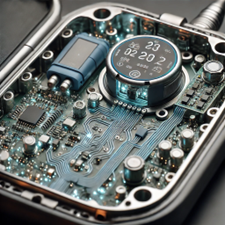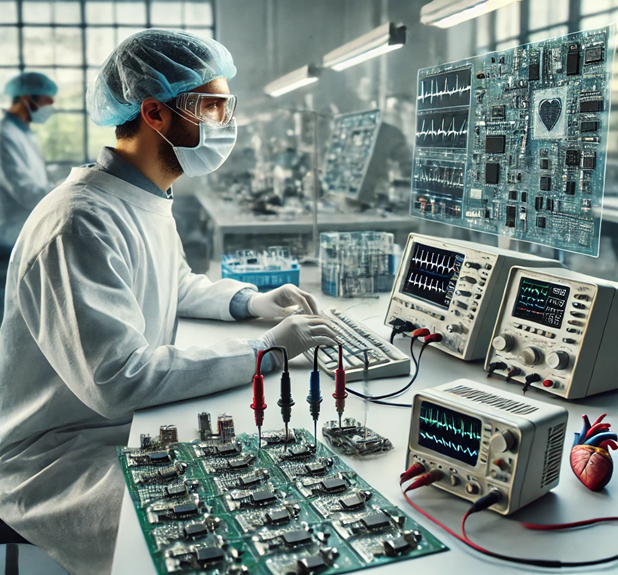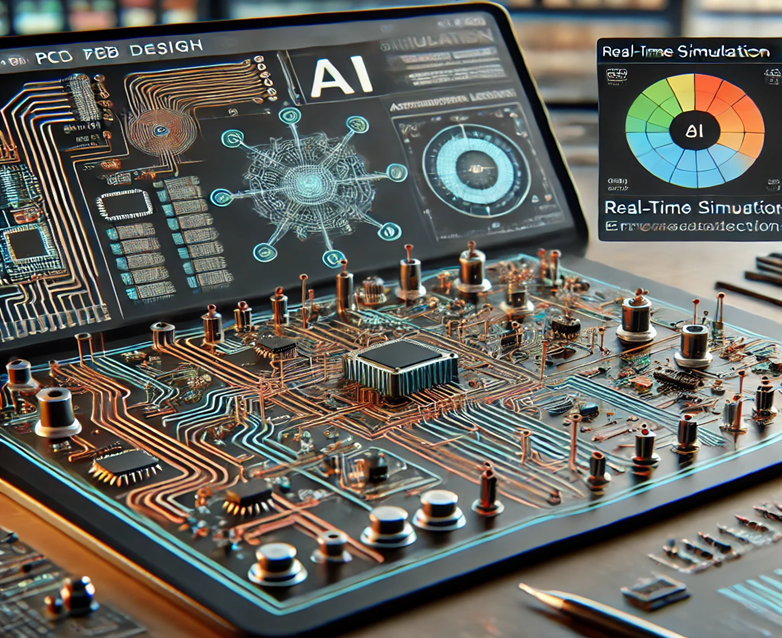Enhancing PCB Manufacturing Processes in Medical Device Industries: Best Practices and Innovations
Advanced Printed Circuit Boards (PCBs) are the only future of the medical device industry and are also the heart of machines for diagnostic tools and life-saving machines. The tremendous amount of riding on these critical products means that updating the PCB manufacturing processes is constant so that they become unique to suit the demands of the high-tech, very high-regulated field.
In this blog, we’ll look behind the curtain into the latest events and innovations in the PCB manufacturing process, the key role of innovation, and best practices on quality and compliance for an always demanding industry.
Introduction to PCBs in Medical Devices
PCBs are at the heart of modern medical technology. From heartbeat monitoring to accurate medication dosages, medical equipment relies solely on well-designed PCBs to function without a hitch. But manufacturing PCBs for this sector brings with it some special challenges.

A. Troubles in PCB Fabrication
The fabrication of PCB is no cakewalk, especially when it comes to the highly regulated sector of medical technology:
Regulatory Compliance: The medical device should be designed based on strict requirements from the FDA and ISO, thus regulatory compliance is crucial for a manufacturer.
Reliability and Safety: Since it involves life and death, reliability is a critical dimension of medical devices. In this case, there is huge pressure on the PCB manufacturer companies to achieve flawless designs.
Rapid Technological Advancements: As miniaturization and IoT integration continue to raise the bar on what is possible, manufacturers have to keep pace while remaining compatible with older systems.
Curious about these challenges? See how changes in regulations affect PCB design.
Best Practices in PCB Design for Medical Devices
Structured and cooperative PCB design is a must for medical devices to be safe, reliable, and high-performance.
A. Accuracy in Medical Device PCB Designs
High accuracy in the PCB designs of medical applications is significantly required. The engineers would be quite particular about the placement of components, distribution of power, and thermal management in the PCB design. Simulation tools also help elaborate on the performance of the PCB, so that errors are avoided even before it reaches the production stage.
B. Coordination between Engineers and the Experts in Medicine
Successful PCB designs always revolve around collaboration. This is because medical professionals can give vital insights on the usage of the devices: helping engineers to design real-world applications.
Want more information about how collaboration informs design? Learn how cross-functional teams contribute to successful development in the medical device industry.
The Importance of Prototyping in PCB Development
Prototyping is an important process, and the PCB needs to be iterated through rigorous prototyping before mass production. Prototyping ensures that the designed item would behave in a real-world environment.
A. The Prototyping Process
Prototyping allows engineers the chance to:
- Test several configurations and choose the best layout
- Spot potential flaws and make necessary improvements
- Validate user experiences, ensuring that devices will easily be operated in a clinical environment.
B. Benefits of Rapid Prototyping
With advancements in 3D printing and real-time simulation, the time it takes to prototype has become faster. In this manner, manufacturers can shave off time to market without sacrificing adherence to set standards by the device. Mass production of a PCB requires the prototype to be carried out most stringently. Prototyping is essential before a board can come into action in a real-world environment.

Innovations in PCB Manufacturing
The world of PCB manufacturing is rapidly changing with the innovations seen in the areas of automation, layout optimization, and sustainable practices.
A. Automation and AI-Driven Processes PCB Automation. Nowadays, AI is even used in design rule checking(DRC) so that humans are left out of the error-making process. Thus, this saves time and money on the final production process. AI can predict design bottlenecks even before they ever happen. Thus, it saves more time and cuts the cost of revisions.

B. Sustainable Manufacturing Practices The necessity for sustainability in manufacturing has been driving innovation in material recycling, waste reduction, and production of PCBs using environmentally friendly processes. Manufacturers have been studying all avenues through which the environmental impact of the process can be reduced, an extremely vital criterion in the present healthcare scenario.
Overcoming Challenges in PCB Manufacturing
Despite these innovations, the PCB manufacturing industry in the medical device sector remains bedevilled by several challenges.
A. Data Privacy and Security
With IoT-enabled medical devices omnipresent today, data security is one of the biggest issues. PCB designs that contain sensitive patient data or proprietary technology need to be safeguarded from cyber threats.
B. Interoperability with Legacy Systems
Many hospitals are now using legacy systems that are not sustainable for the new and advanced PCBs. Their modernization requires much money and time but is inescapable to accommodate the modern PCB technologies.
Want to know how firms handle this problem? Learn how organizations modernize legacy systems.
Future Trends in PCB Manufacturing for Medical Devices
The future of PCB manufacturing holds much promise, with trends that seem to advance further and further in miniaturization and AI-driven optimization and even to the design phase into quantum computing.
A. Introduction to AI and Machine Learning
AI will be the driving factor toward maximal PCB layout optimization and high design efficiency with complete compliance checking automation. Short-term progress can be expected, as deep learning algorithms can enable even more intensive and complex simulation and layout optimizations.
B. Quantum Computing in PCB Design Although still in its infancy, quantum computing is soon to be the best future in PCB manufacturing redesigning. The quantum computers will be able to solve complex calculations at unprecedented speeds. Impossible designs are now possible today thanks to it.

Conclusion: The Future is Bright for Medical Device PCB Manufacturing
Innovation, collaboration, and sustainability are the factors that will determine future PCB manufacturing in the medical device industry. Thus, in such a scenario where challenges are gathered to gain momentum, AI-driven design, automation, and sustainable practices will likely provide help in developing various sectors toward being not only more efficient and reliable but also much safer.
In keeping with all these trends, manufacturers ensure staying at the forefront of an ever-changing industry, bringing life-saving technologies that address the needs of patients worldwide. Interested in hearing what is happening on the horizon concerning PCB manufacturing? Join the revolution now and access more information at Nanogenius Technologies.

Frequently Asked Questions
- How do AI-driven PCB manufacturing processes improve quality?
Design flaws can be more easily identified, the production process made much smoother, and compliance checks can be done in a far more streamlined manner. Thus, fewer error-prone boards with higher-quality PCBs will come out of this process. Read more about AI in PCB manufacturing.
- What are the key challenges in medical device PCB manufacturing?
The greatest challenges are regulatory compliance, data privacy and compatibility with legacy systems. Discuss how the companies deal with these issues.
- How does prototyping help in the design of PCBs in medical devices?
Prototyping also helps catch design flaws very early, reduces costly post-production revisions, and improves the user experience. Learn why rapid prototyping is so important in healthcare.

